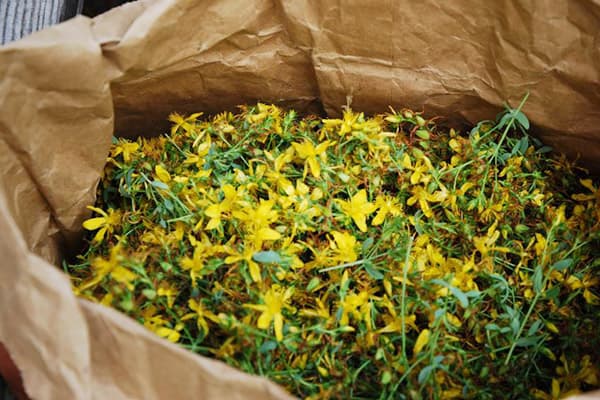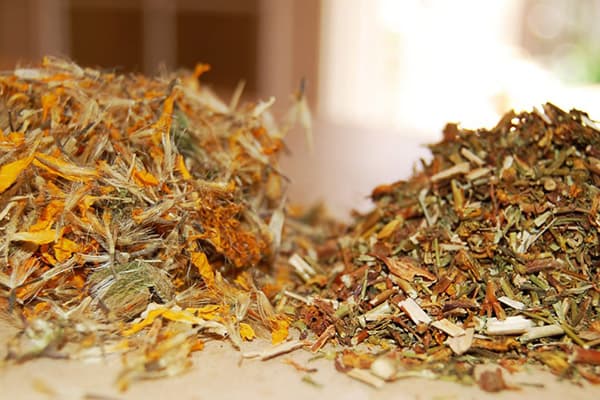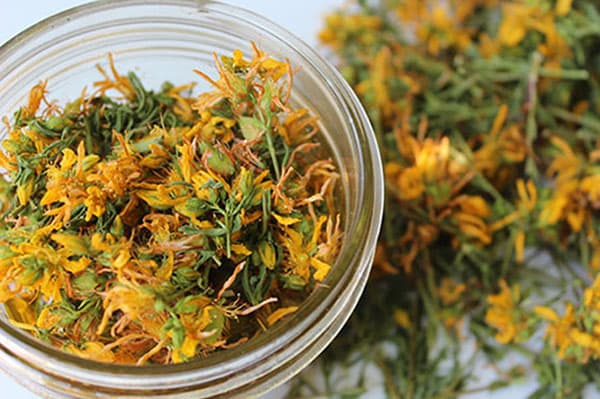How can and how not to dry St. John's wort?
Content:
The herb St. John's wort has a lot of useful properties and is useful for treating a variety of diseases. Many people prefer to dry St. John's wort themselves. Properly prepared, it has incredible healing power. The decoction is used to treat wounds and abrasions, burns, boils, and abscesses. It’s not for nothing that “jeroboy” means “healer of wounds” in Kazakh. With the help of rinses, you can cure inflammatory diseases of the nasopharynx and oral cavity: sore throat, stomatitis, sinusitis and others. And the blood-red drink is taken internally to boost immunity, for diseases of the gallbladder, liver, intestines, and stomach.

How to prepare St. John's wort?
For plants to have medicinal power, it is not enough to simply cut them, somehow dry them and brew them. It is important to choose the right time and place for collection. Only the top part is taken from St. John's wort, about 30 cm. 20% of the plant must be left so that it can recover. The collected grass is placed in a fabric bag, without compacting, and brought home to dry. St. John's wort must be dried immediately, within 5–6 hours from the moment of collection.
Inexperienced herbalists often confuse St. John's wort with a similar plant. A simple technique will help you accurately identify a medicinal plant: you need to pick a yellow flower and rub it between your fingers.If the skin turns blue-violet, St. John's wort is genuine, but if not, it is false.
When to collect?
The medicinal plant is traditionally harvested from June to August, during its flowering period. Peak ripening occurs at the end of June - beginning of July. St. John's wort becomes tall, up to 60–80 cm. Its leaves by this time are well formed and the flowers are in bloom. With the appearance of fruits, approximately from the second ten days of September, St. John's wort loses its healing power.
It is better to collect St. John's wort in dry weather and even drought. During the rainy season, grass is difficult to dry, quickly deteriorates, and rots.
According to popular beliefs
In the old days, St. John's wort was collected exclusively on the right days. It was believed that the maximum strength of a plant cut on Midsummer's Day (Ivana Kupala) - July 7th. Armed with a sharp knife, herbalists went to forest clearings or fields at noon and continued to harvest grass until 15:00. On other days, they were guided by the phases of the moon. There is an opinion that plants feed better during the new moon. At this time, gravity weakens and more nutrients and moisture come from underground.
There are many beliefs associated with St. John's wort. His ancestors called him the creature of fire. According to legend, he grew up where lightning struck during a severe thunderstorm. The plant is used not only for medicinal, but also for ritual purposes - it is believed that it protects against the evil eye and demonic forces. The twig is placed under the rug at the front door, under the bed of a small child, or simply carried dried with you.
Where does it grow?
St. John's wort is not uncommon in our area. It grows almost throughout the entire territory of the Russian Federation.
Most often you can find the plant in the following locations:
- on the edges of coniferous forests;
- in sunny meadows;
- in dry meadows;
- along the edges of the fields.
St. John's wort is often found as a weed along roadsides. But since it quickly accumulates substances from the environment, collecting it near highways, factories, factories and megacities is not recommended. To avoid harming your health, it is better to go for it in nature, free from exhaust gases and toxins.
Drying
To preserve the beneficial properties of the plant, you need to dry it correctly:
- Immediately upon arriving home, you need to sort out the grass: remove insects, foreign plants, debris, and withered twigs.
- Both leaves and stems of St. John's wort are dried, but the main healing power lies in the flowers. If desired, you can cut them and dry them separately. Otherwise, the branches are sent to dry entirely. There is no need to grind the grass, otherwise all the beneficial juice will flow out.
- For drying, choose a well-ventilated, dry place. This could be a balcony or your own yard. It is advisable that direct sunlight does not fall on the workpieces. This way they will retain more nutrients.
- The herbs are laid out on cotton or chintz fabric in a layer not exceeding 7 cm. You can use paper, but it must be white, without toxic, caustic dyes.
- To protect against insects, it is recommended to cover the drying St. John's wort with gauze.
- You can also make small bundles of St. John's wort and hang them on a line to dry. The volume of the bouquet should fit freely in your hand.
St. John's wort dries completely in an average of 5 days. The drying time depends on climatic conditions. In rainy weather, drying herbs is more difficult - it can take up to 2 weeks until they are completely dry.
In the dryer
It’s even easier to dry St. John’s wort at home in an electric dryer.Optimal temperature and constant airflow create ideal conditions for preserving the beneficial properties of the plant.
How to dry grass in a dryer?
- Sort through the branches and clear away any debris.
- Place on racks in a thin layer.
- Turn on the electric dryer and select the “For Herbs” mode or set the temperature to 35–40 degrees.
- In 3–4 hours, St. John's wort will be ready. But it is better to keep it for another 1-2 days in an open container.
Drying St. John's wort in the oven is strictly prohibited. Even with the door open and the heat setting set to minimum, the temperature inside is too high. Intense heat destroys the essential oils in the plant, after which it loses almost all its benefits.
Storage
Dried St. John's wort is afraid of moisture. Properly store it in a dry and shaded place.
Almost any container is suitable for storage, but first it is recommended to wrap the grass in paper. Typically, herbalists place medicinal plants in cardboard boxes or paper bags. The shelf life of dry St. John's wort is 3 years.
It is better to store St. John's wort in crushed form in pieces of 5–7 mm. This way it takes up less space and is easy to dose for tea or decoction. It is best to use large scissors or pruners for chopping. And some grind dry herbs with a blender (1-2 seconds) or using a coffee grinder.
Use of St. John's wort
St. John's wort can be used for different purposes. Many, even being completely healthy, love to make tea with it. The herb has a specific taste, but with honey and lemon it is quite pleasant. If you plan to take St. John's wort for treatment, you should first consult a doctor.
Here are some popular recipes for various diseases:
- For thrush 1 tbsp. l. dry St. John's wort pour 500 ml of water, simmer over low heat for 15–20 minutes.After cooling, use for douching. You can also brew St. John's wort as tea and take it orally (1 teaspoon per glass of boiling water).
- For diarrhea, abdominal pain and inflammation of the gallbladder 1 tbsp. Pour a spoonful of St. John's wort into a glass of boiling water and slowly heat it over the fire for 15 minutes. Cool and divide into three doses. Take before meals.
- For urinary incontinence 3 tbsp. l. St. John's wort flowers pour 1 liter of boiling water, wrap for 3 hours. Drink throughout the day. The course of treatment is 7 days, a break is 2 weeks, and then another 1 week of taking the decoction.
- For sore throat 2 tbsp. spoons of dry plant, pour 500 ml of boiling water, cover and leave for 1-2 hours. Strain and use to rinse 3 to 6 times a day after meals.
- For bruises and abrasions 1 tbsp. l. Brew herbs with 100 ml of boiling water. After an hour, soak gauze folded in 4-5 layers with the broth and make a compress overnight.
St. John's wort is not taken orally during pregnancy and lactation. It weakens the effect of oral contraceptives and antibiotics and is incompatible with antidepressants, anticoagulants, and heart medications. The decoction should also be avoided in case of serious pathologies of the liver, kidneys, or nervous system.
Despite the formidable name, St. John's wort does not kill animals at all, but is very useful for people. It is recommended to always have the herb in your home medicine cabinet. It will help with flatulence, abdominal pain, wounds and damage to the skin. For sore throat and stomatitis, the decoction will relieve pain and help get rid of the disease faster. Therefore, if you notice thickets of a medicinal plant in nature, hurry to pick it and dry it. Just spread the grass on a cotton cloth in a ventilated place in the shade - the heat and wind will do their job.






